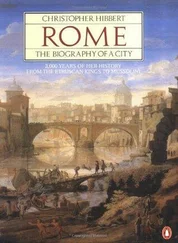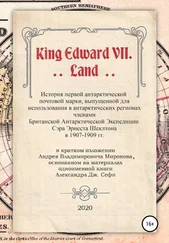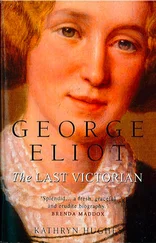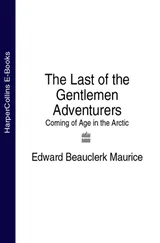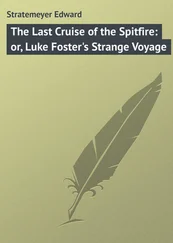Towards the end of his life the King took the greatest pleasure in riding a specially made tricycle up and down the drive at Sandringham. He also much enjoyed motoring, provided he was not accompanied by the Queen, ‘whose one idea was not to run over a dog’ and who tapped the chauffeur on the shoulder whenever she thought his speed excessive. Her husband, on the contrary, liked to be driven extremely fast, and could not bear the sight of a car in front of him on a stretch of country road. Motorists, therefore, became accustomed to being overtaken by a large Daimler or sixty-five-horse-power Mercedes in which a bearded figure sat on the blue morocco back seat, smoking a large cigar, as he urged his chauffeur on, with impatient gestures and gruff commands, to ever greater speeds. After 1907 motorists also became used to the uncouth sound of a special horn in the shape of a four-key bugle which was always carried in the royal cars after their owner had admired a similar device employed by the Kaiser.
The King had been introduced to the pleasures of motoring in 1898 at Warwick Castle, whence he had made a brief excursion in a six-horse-power Daimler. The next year, while staying with Mr and Mrs George Cavendish-Bentinck at Highcliffe Castle in Hampshire, he had been taken out by John Douglas-Scott-Montagu, later second Lord Montagu of Beaulieu, in a twelve-horse-power Daimler which, to the consternation of the ladies sitting in the back, reached a speed of forty miles an hour. At that time very severe restrictions were imposed upon the speed of cars, and it was not until 1903 that the limit was raised to twenty miles an hour on roads deemed suitable for such fast-moving traffic. Yet the King, unaffected by the traffic laws of his realm and driving in cars which bore the Royal Arms on the door-panels but carried no number plates, paid no attention to the regulations. He often congratulated himself on having driven along the Brighton road in 1906 at sixty miles an hour, three times as fast as the law allowed, though he professed himself to be uncompromisingly opposed to motor racing, which he thought ‘would be very dangerous for the occupants of the motors and still more so for the Public’. His motor engineer, C.W. Stamper, who rode in front next to the driver, ready to jump down with his tool-bag if there were any trouble with the engine, recorded that the King’s Mercedes was once rattling up to Newark at ‘a good pace’ when the chauffeur failed to notice a culvert in the road which the car’s wheels struck with a fearful bump. ‘Stop! Stop!’ the King called out. ‘Do you want to kill me?’ But he seemed more disturbed by the dent in his brown bowler, which he showed indignantly to Stamper, than by the threat to his own safety. Generally as he got out of the car he would say to Stamper with satisfaction, ‘A very good run, Stamper; a very good run, indeed!’
At Queen Alexandra’s instigation, so it was said, the King gave up the cruel practice of shooting pigeons released from traps. But to the end of his life he continued to derive the greatest pleasure from most other forms of shooting. He was always seen to be in excellent spirits when, dressed in a rough country suit with heavy boots and an Inverness cape, and accompanied by his favourite retriever, Diver, he left the house with the prospect of a day’s good sport. After tripping over a rabbit hole at Windsor in 1905 he was unable to walk out with the other guns, but he solved the problem by bringing into use a low pony carriage in which he was drawn to his stand, where the pony was taken out of the shafts so that the King could shoot from his seat.
As he grew older the King seemed to enjoy a day’s racing even more than shooting. He relished the company of racing people and what he himself termed the ‘glorious uncertainty of the turf’. Before the middle of the 1890s he had had very few successes as an owner. But his fine horse Persimmon won the Derby in 1896 — prompting Rosebery to remark that everyone would say that all the other horses had been stopped — and four years later, after another splendid royal horse, Ambush II, had won the Grand National, Persimmon’s brother, Diamond Jubilee, also won the Derby. As well as the Derby, Diamond Jubilee won the Newmarket Stakes, the Eclipse Stakes, the St Leger and the Two Thousand Guineas, after which last success its owner appeared to be ‘delirious with joy’.
Admiring success in others, the King revelled in the glow of triumph himself. He seemed never happier than when a victory on the turf was welcomed by the crowd as an opportunity to cheer him and wave their hats at him, shouting ‘Good old Teddy!’ In the last year of his life, Minoru won the Derby for him for the third time, and racing correspondents reported that there had ‘never been such cheering’, that tens of thousands of people sang ‘God Save the King’, and that even the policemen on duty, infected by the almost hysterical atmosphere of the occasion, threw their helmets in the air and joined in the roars of acclaim. That night the King gave his usual Derby Day dinner at Buckingham Palace to the members of the Jockey Club. His chefs had excelled themselves with their turtle soup and whitebait and those sugary concoctions made up in the royal racing colours of purple, scarlet and gold. And the happy host, who had returned from the Continent a fortnight before looking tired and ill, now seemed suddenly to have recovered his health and spirits in the excitement of his success.
Criticisms of the King’s extravagance as a racing man were not altogether just. He was certainly impulsively lavish in his presents to his jockeys and stablemen after a win: when Ambush II won the Grand National he gave £500 to the jockey, £250 to the head stableman and £50 to the lad who looked after the horse. But his prize-money was considerable. In 1896 and 1897, when he earned a total of nearly £44,000, he was second in the list of winning owners; and in the single year of 1900 he earned almost £32,000. Diamond Jubilee, who won the Derby that year, was eventually sold for £31,500. Altogether, between 1886 and 1910, from stud fees and stake money, his stables took well over £400,000. Nor was he, contrary to many reports, an extravagant gambler. It seems that the largest bet he ever placed on a horse to win was £600; and although he could not have afforded to lose such a sum in his youth, by 1894 — when he did lose it by backing the favourite, Baron Hirsch’s Matchbox, to win the Paris Grand Prix — his finances were in a less perilous condition.
As early as 1869 Queen Victoria had noted in her journal her son’s hopes and expectations of being granted a larger income. But Gladstone had contended that it was up to the Queen to make provision ‘in consideration of the extent to which she [allowed] him to discharge her social duties for her’. Twelve years later Francis Knollys told Lady Spencer, so Gladstone’s secretary recorded in his diary,
that the question of the Prince of Wales’s debts could not be postponed much longer. That will be an awkward matter for the government to deal with. It is sure to raise a very strong feeling against the Queen who (it will be thought and not unfairly thought) should have made some allowance to H.R.H. in consideration of the extra expenses which fell upon him by reason of her seclusion.
But it was not until 1889 that the House of Commons increased his income by £36,000 and granted him a capital sum of £60,000 so that he could make provision for his children. And even then, having spent £300,000 on the improvements at Sandringham, he had found it impossible to carry on without recourse to borrowing from friends and even, so it was supposed, from moneylenders whom French detectives reported as being perpetual visitors to his various hotels. He was apparently also reduced from time to time to selling various possessions. Joseph Duveen recalled a man coming into his shop with a piece of jewellery for which he asked £100. Duveen claimed to have told the man it was worth much more than that and to have given him £500. He was ‘pretty sure’ that his customer had been the Prince of Wales.
Читать дальше


